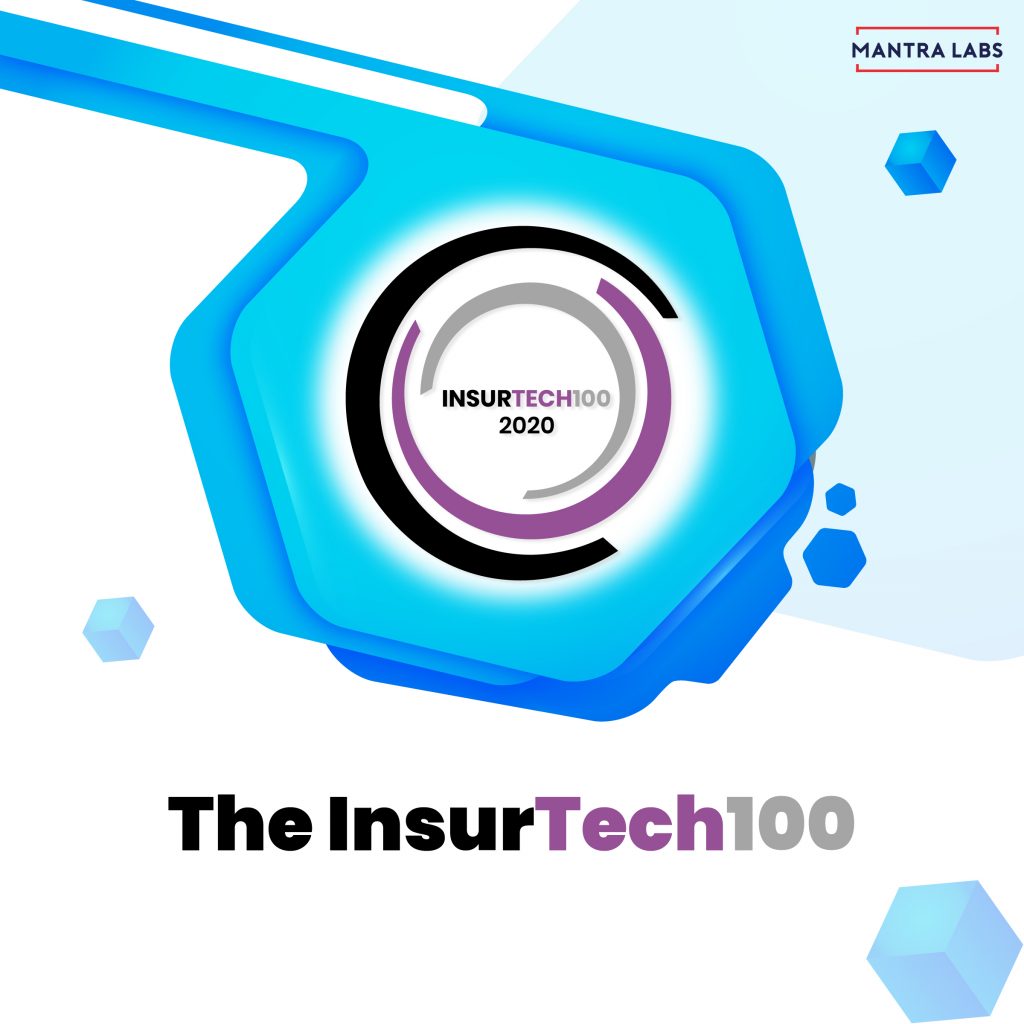Specialist research firm FinTech Global announces Mantra Labs as one of the top 100 Insurtech companies transforming the global insurance industry.
Bengaluru, Karnataka, Nov 5th, 2020: Mantra Labs announced today that it has been recognized by Fintech Global in their 2020 InsurTech100 list. The ‘InsurTech100’ is an annual list that features the 100 most innovative insurance solution providers in the world curated by industry stalwarts.

FinTech Global is a specialist research firm offering the most comprehensive data, valuable insights, and powerful analytical tools to the global FinTech industry. The InsurTech100 finalists were selected by a panel of analysts and industry experts from an exhaustive list of over 1,200 companies. The standout businesses are recognized for their innovative use of technology to solve a significant industry problem, generate cost savings, or improve efficiency across the insurance value chain.
Mantra Labs offers three core products for solving the most pressing challenges faced by InsurTechs around — claims processing, workflow management, process automation, onboarding, leads maximization, customer experience & engagement.
FlowMagic is a visual AI platform for insurer workflows. With FlowMagic insurers can create, customise and monitor workflows built to scale across the insurance value chain. It comprises of AI-powered applications which can be strung together with unique plug and play functionality to execute any business-specific process.
Lead Conversion Accelerator is an AI-enabled tool that allows insurers to maximize capture from the sales funnel for AI-driven lead allocation, prioritization and conversion.
Hitee, is a Multilingual AI-Powered Video chatbot for customer support teams, allows insurers to fulfill routine and non-routine service tasks via Natural Language Processing (NLP) and Machine Learning (ML) models trained on insurance-specific parlance.
“At Mantra Labs, we believe in creating Intelligent Experiences by leveraging technology and design to solve real-world consumer problems that allows our clients to adapt, scale and grow quickly” says Mikhail Mitra, Co-founder & Chief Product Officer, Mantra Labs. “We are proud to be recognised as a leader in this space.”
About Mantra Labs
Mantra Labs is an AI-driven Products & Solutions Firm. We design and build Intelligent Experiences for the Insurance Industry. Leading Insurers such as SBI General, Care(Religare) Health, AIA Hong Kong, Pramerica and Industry giants like Ola, Myntra, Quikr, Alkem among others trust us. With a team of 175+ technology tinkerers, experimenters and product enthusiasts, Mantra Labs solves the most pressing problems along the Insurance value chain. The company also has strategic technology partnerships with Microsoft Azure, AWS, MongoDB and Nvidia.
Media Contact: Divya Kulkarni
Email: divya.k@mantralabsglobal.com
Address: Bangalore, India
Phone number: 8007990083
Website: https://www.mantralabsglobal.com
Knowledge thats worth delivered in your inbox





